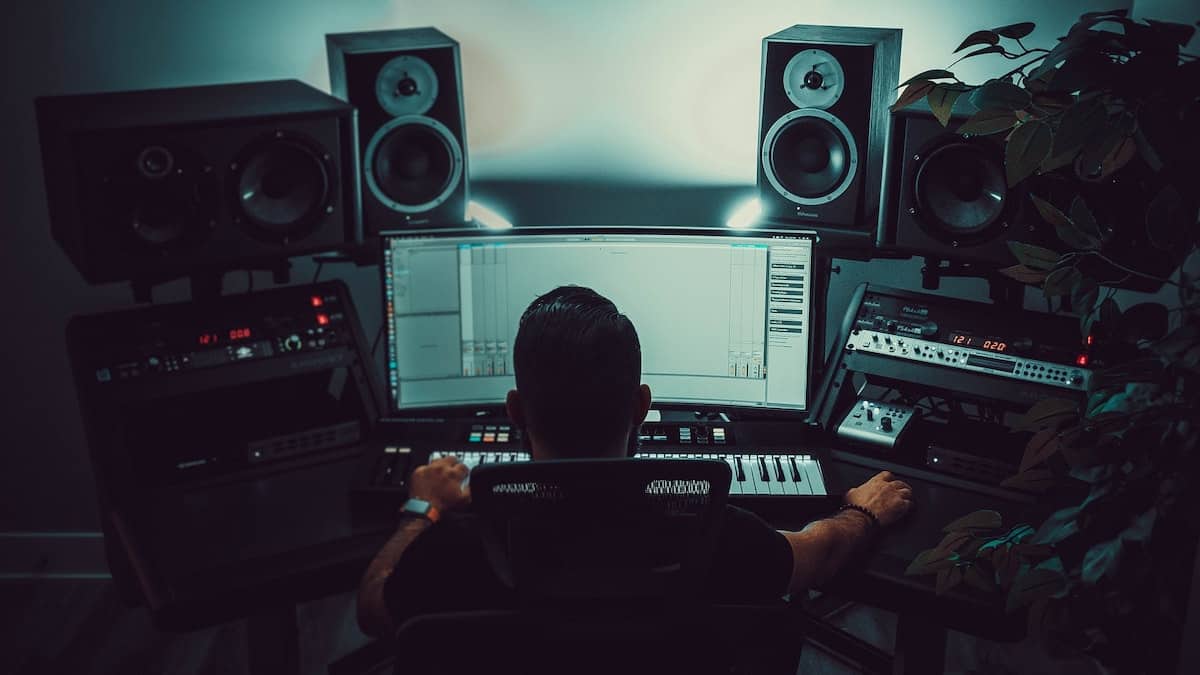Blog
Is 10 Gigabit Ethernet Worth It for Music Applications?

For $100 you can configure current Macs with faster networking, and PC cards now cost about the same. Should you?
It looks like a no-brainer: “only” $100 more, better just add 10Gb Ethernet to the cost of the new computer and be future-proof.
Well, maybe.
There are benefits to the increased bandwidth for large offices with Ethernet data traffic jams, which is presumably Apple’s target audience. But is there any reason for musicians to do that (or spend a similar amount on a 10Gb Ethernet card for a PC)?
Most of us musicians use multiple computer set-ups differently from the way they’re used in offices. We may be adding another machine to handle softsynths, effects, and sample-streaming overflow; for compatibility with older software or both Windows and macOS; or sooner than later, to keep up with the latest the M1 ARM chips in new Macs.
Many of us have been using multiple computers since the early days of sample streaming, when it was necessary to have audio (and MIDI) interfaces on each machine. While there are now audio interfaces that support more than one computer at a time – a very useful feature – it’s been possible to run audio over an Ethernet connection for a few years.
There are several audio-over-ethernet hardware/software systems, such as Dante and MADI. Those tend to be used for broadcast, concerts, large audio and video studios – more commercial applications.

Anecdotally, the most popular program for musicians running multiple computer set-ups, in studios of all sizes, is Vienna Symphonic Library’s wonderful Vienna Ensemble Pro. VSL bills it as LAN mixing and hosting software, which pretty much says it all.
It consists of plug-ins you insert in your DAW’s mixer, and then each plug-in instance connects to a “server” program just like a DAW mixer. The Servers host instrument and processing plug-ins, receive MIDI, and then stream their output into your DAW’s mixer. You can also send audio from the DAW into Servers for processing and back again.
Servers can run on the local machine or on Mac or Windows machines on your network; it makes no difference, they behave exactly the same way. Their complete configurations are saved and loaded with the DAW session, and you can do faster-than-real-time bounces to disk. How do they do that?
Vienna Ensemble Pro’s latency is always precise, and it depends on the size of the processing buffer you set up. The default is twice the host buffer, just as if you had an audio interface on the remote machine. In this age of very fast computers, that latency can range from barely discernible to entirely manageable.
And that returns us to 10Gb Ethernet, which reportedly has lower latency than standard Gigabit Ethernet (i.e. 1Gb Ethernet; the slower 10baseT and Wi-Fi are not up to this application – although they’re fine for MIDI-Over-Ethernet). We’ll report back after testing whether the playing latency is noticeably better with 10Gb Ethernet, but it’s very unlikely to make any difference. The simple reason is that it’s going to be dwarfed by the processing buffer setting.

We’ll also report back on whether 10Gb Ethernet makes a difference for screen sharing. That’s when you use display a networked remote computer’s screen in a window on your main machine using something like Windows Remote Desktop or macOS’ built-in screen sharing. Click in the screen sharing window (or put it on a separate virtual desktop), and the remote computer behaves just like any other program running on the host machine.
Screen sharing over Gigabit Ethernet is just a little more sluggish than connecting the monitor directly, but it’s not bad at all, and much better than it used to be. That’s just the screen – the keyboard and mouse (or other input device) are instantaneous for all intents and purposes.
Now, it’s likely that the first question people will ask is whether 10Gb Ethernet lets you stream more audio channels. The shocking answer: who cares?!
We asked VSL what they recommend, and their answer was that for the vast majority of musicians it makes absolutely no difference. You can stream several hundred audio channels over Gigabit Ethernet, and channels that are silent don’t count in the total.
If you ever want to figure out how many audio channels you can stream over Ethernet or any other bus, here’s the formula. Many thanks to Ben from VSL for this:
Maximum simultaneous output count = bandwith / (sample-rate * bit depth * channels per output).
For example: stereo, 44.1kHz, 32-bit, 1Gb Ethernet.
1,000,000,000 / (44100 * 32 * 2)
= 354 outputs (stereo).
That’s a theoretical maximum, because there’s some processing overhead, especially if you’re sharing the screen over Ethernet (which is far more convenient than setting up a KVM switch and we strongly recommend it). But even if that 708 mono audio channels is 500, that’s a lot of music!
And here we are lusting over analog synths with eight voices.
So is there a reason for a mere musician to pony up for 10Gb Ethernet? Maybe if you’re copying huge files to a network attached storage system, or perhaps sharing videos with other people.
Otherwise, probably not.















